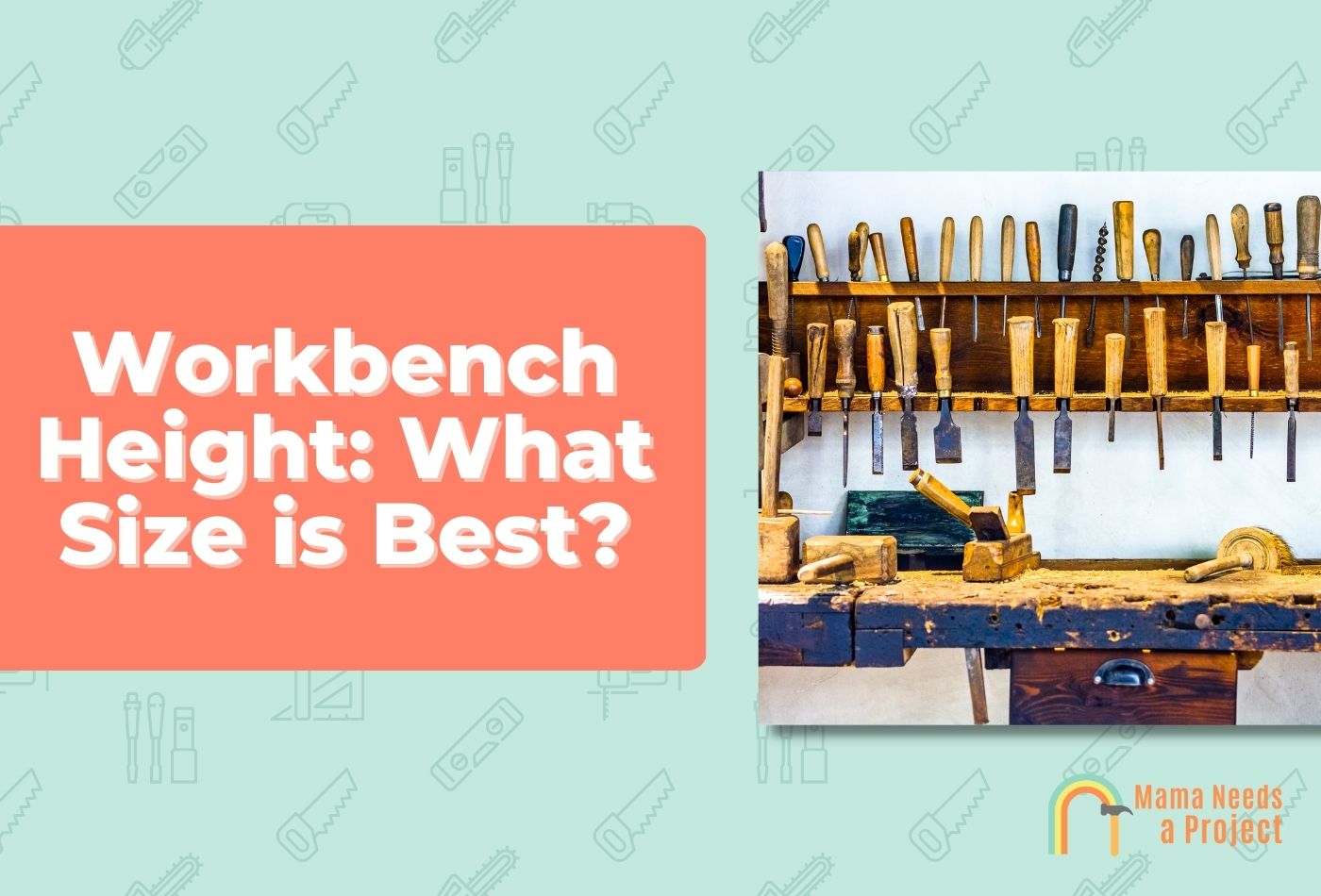Best Workbench Height (3 Easy Ways to Find the Right Height for You)
You’ll find many tools and fixtures in a home woodworking shop, and few are more important than the workbench.
A workbench must be accommodating in a variety of ways, and the length, width, and height must all be right to ensure you can use the workbench for a wide range of tasks.
In this post, I’ll explore the best workbench height, how to determine the ideal workbench height for your needs, and much more. Let’s dig in!
Tips for Determining the Best Workbench Height
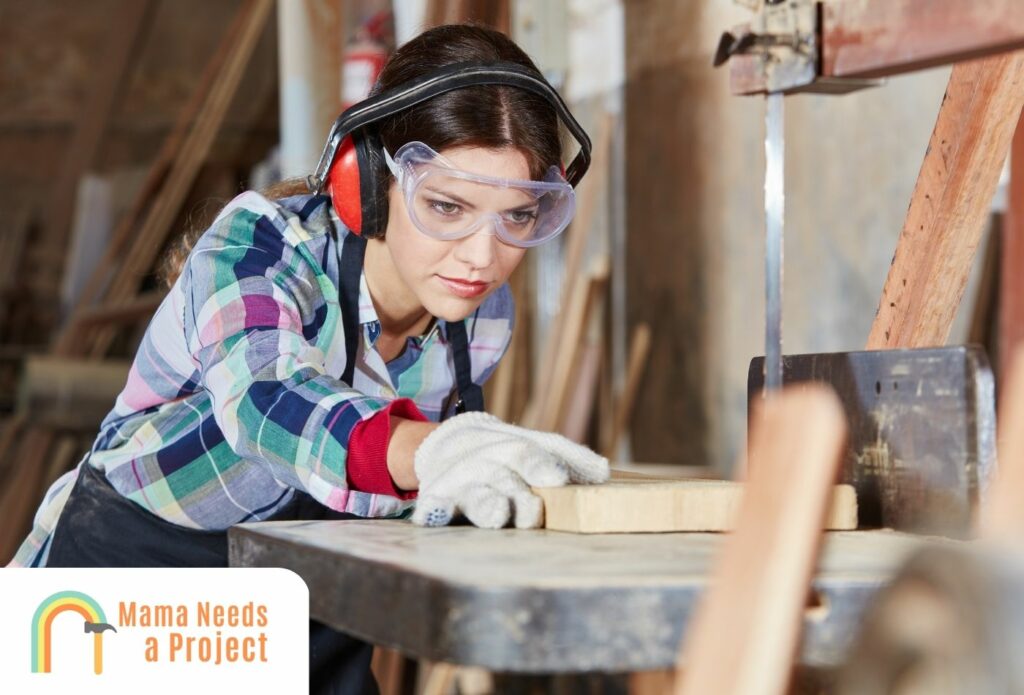
The truth is, determining the right work bench height often takes a bit of trial and error. But if you consider the tips below when you’re shopping for a workbench, you’ll have a good shot at selecting a workbench that’s perfect for you.
Your Height
Your height is one of the most important factors when you’re determining how tall your workbench should be.
Whether you sit or stand at your workbench, if you’re too short or too tall for it, you won’t be able to work at it long without getting frustrated.
If you’re between 5’9” and 6’ tall, then the chart below is for you; use it to determine which table height is ideal for the kind of work you do. If you’re shorter than 5’9”, obviously your workbench will need to be smaller by a few inches, and if you’re taller than 6’ it’ll have to be higher.
| Workbench Stature | Workbench Height (In) |
| Low Workbench | 29-31” |
| Midsize Workbench | 33-36” |
| Tall Workbench | 37-39” |
Note: If you’ve recently purchased a workbench and you’ve discovered it’s too small—but only by a few inches—you can attach adjustable legs to raise it 3” to 4”.
Arm Length

Since you’ll be using your hands when you’re at the workbench, it’s critical to make sure the workbench is the perfect height. If it is, it’s likely you won’t experience discomfort in your hands, wrists, elbows, or shoulders while working. There are two main ways to determine ideal work bench height using your arms.
Way 1: For a Low Work Bench
The first way requires that you let your arms hang down by your sides. Next, measure from the floor to where your wrist begins. The measurement you get is how high the workbench should be.
Way 2: For a Tall Workbench
The second way requires you hold your arms out so they form a 90° angle with your torso. Once you’re in this position, you need to have somebody else measure the distance between the floor and the tips of your outstretched hands. This measurement you get is how high the workbench should be.
If you plan on using a stool while you’re at the workbench, you’ll need to ensure this accessory is the right height as well. To ensure you get a stool that’s the right size, buy one that’s on the larger side and saw it down till it’s an ideal height.
Of course you’ll have to be precise when cutting so the legs aren’t unbalanced. When sitting on the stool, your hands should be level with the workbench’s surface once your arms are bent at a 90° angle.
Type of Work
The type of work you use the workbench for also plays a big role in determining how high your workbench should be.
For example, if you mostly work on projects that require lots of attention to detail—think painting a birdhouse or model ship building—then you may want a taller bench.
With one of these, you don’t have to constantly lean in an uncomfortable way, nor do you have to rely on cumbersome magnifying equipment to see what you’re doing.
On the other hand, if you want to apply more strength when using tools, or you’re frequently doing work that requires leaning and putting your bodyweight behind what you’re doing, it’s better to have a lower workbench, as with one of these you’ll have plenty of space to exert more force.
If you use your workbench for tasks large and small, then a midsize workbench is probably best for you. With one of these, you won’t be inhibited when executing small tasks, nor will you feel restrained when doing work that requires a bit more elbow grease.You can also check out the video below for more help sizing your workbench!
Best Height for a Tall Workbench
When it comes to tall workbenches, the average workbench height should be between 37” and 39” tall.
If your work requires electric-powered hand tools, a tall workbench is best, as you’ll be able to see what you’re doing better and you won’t have to reach down low when operating your tools. Plus, you won’t strain your eyes focusing on your work, as the table’s surface will be closer to them.
And since you’ll be using power tools, you won’t have to worry about your arms getting tired when using a taller workbench. Actually, a taller workbench can be good for your posture and your overall health.
For years studies have shown that the human body is more alert and functional when standing, which means if you’re standing tall while at your workbench, not only will your body be more equipped to handle the work but your brain will be as well.
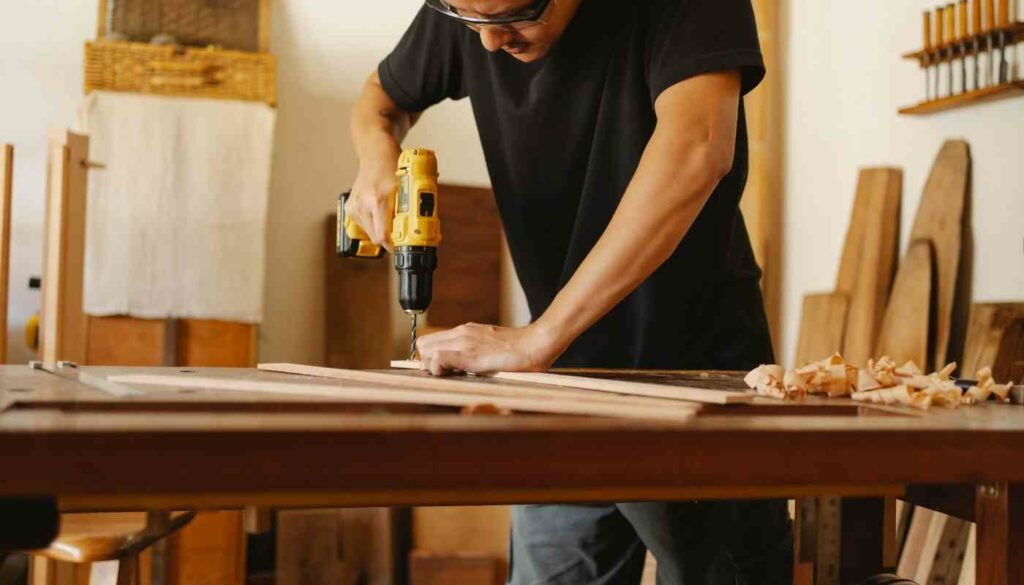
Best Height for a Midsize Workbench
A midsize workbench may be great for you if you do precision work as well as work that requires you to exert a bit more force.
The best workbench height for a midsize bench is between 34” and 36”.
Since midsize workbenches are manufactured to appeal to a larger audience, there are more out there, which means they’re cheaper. On the other hand, if you’re getting a low or tall workbench, you may have to pay a higher price because these workbenches are designed for certain kinds of woodworkers.
Check out my guide to finding the best wood for your workbench so you can have a workbench that lasts for years!
Best Height for a Low Workbench
If you’re between 5’6” and 6’ tall, the ideal workbench height is between 29” and 30”.
Low workbenches are preferred by those who do a lot of hand planing, and tasks that require you to put your bodyweight behind what you’re doing will also be made easier by a low workbench.
The reason why you can put more of your bodyweight behind what you’re doing when using a low workbench is specifically because the surface is closer to the ground. Therefore, you’ll have more room to lean into what you’re doing. It’s harder to lean into what you’re doing when using a taller workbench, unless you stand on your tiptoes to get more leverage.
A midsize table could work, but hand planing may still be challenging. In the end, if most of your tasks require that you exert force, it’s best to go with a low table—this way you don’t tire yourself out quick and avoid straining your arms, neck, or back while working.
What’s the Best Standard Workbench Height?
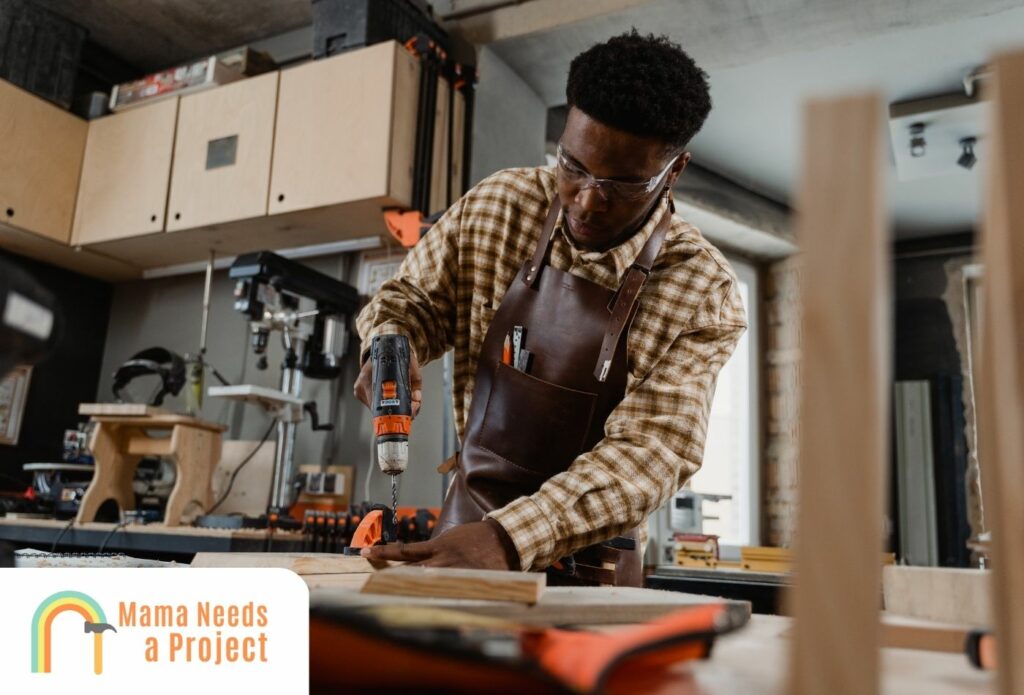
It’s true that many woodworkers exclusively do small tasks, and others exclusively do large tasks. But the majority of woodworkers handle both kinds of tasks, and for these individuals a midsize workbench may be best.
Most standard workbenches are between 34” and 36” tall. So if you’re using a lot of elbow grease at your workbench one day and the next day you’re using it to assemble a small device, a midsize workbench may be for you.
But before you purchase this kind of workbench, run some tests to ensure its height will be sufficient. Specifically, do the arm-related tests discussed already. While it’s true that a midsize workbench can be great for individuals who do a wide range of woodworking tasks, it’s also true that it can be an inhibitor. In this latter case, you wouldn’t be able to do small or large tasks efficiently.
Check out the video below to get more info on the right workbench height!
What’s the Ideal Workbench Height?
Ultimately, the ideal workbench height is going to depend on your body, arm length, and the type of projects you work on.
In most cases, the idea workbench height for the average size person is around 32″ to 34″ tall.
Buying a Workbench vs Making Your Own
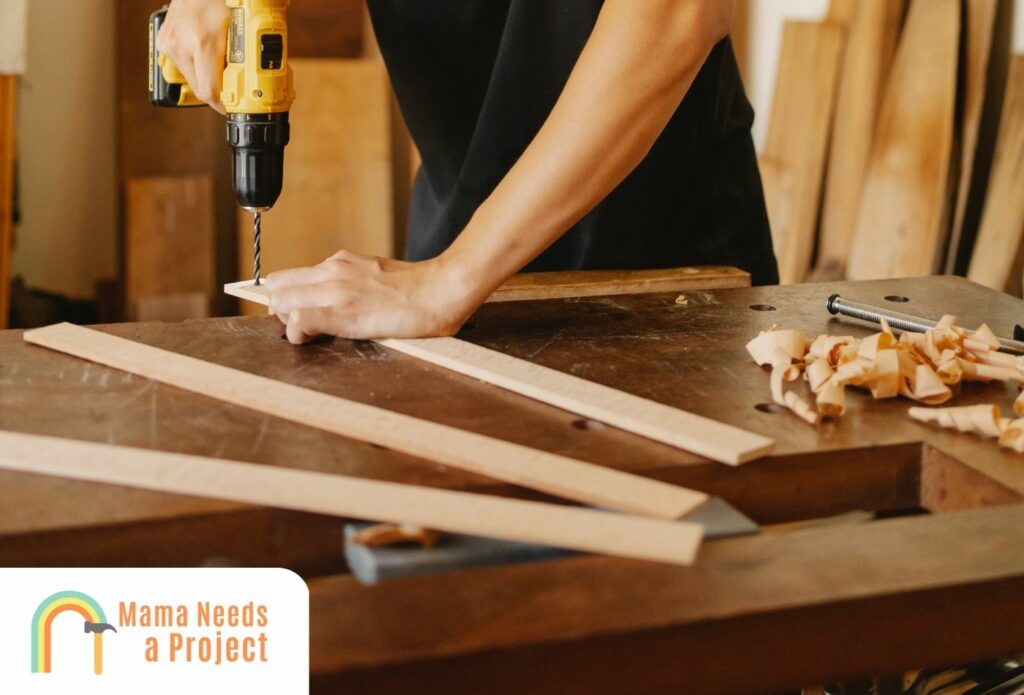
If you want your workbench’s height to be absolutely perfect, consider making your own workbench; you could also modify a prefabricated workbench to meet your height requirements.
Back in the day, woodworkers made their own benches, in large part because they had more requirements.
These customized benches worked well, and many of their once unique features have been integrated into modern workbenches.
Making your own workbench is possible if you have the tools and materials necessary to do so like some cheap wood and other materials.
There are plenty of DIY guides that’ll help you do this, and you can use the correct workbench height measurements to get the right size for you. Just make sure you follow whatever guide you’re using closely, as off-balance and unstable workbenches are even worse than those that are too tall or too short.
Using Adjustable Legs on Your Workbench
If you’re not sure what exact workbench height you want, adding adjustable legs is a great option that will give you more flexibility.
By adding these legs, you can get the perfect workbench height for every task because you can raise or lower it as needed.
While the average workbench doesn’t usually have these, you might be able to add them on after the fact.
In this case, you’ll want to get a shorter workbench because you can always add height, but you can’t decrease it.
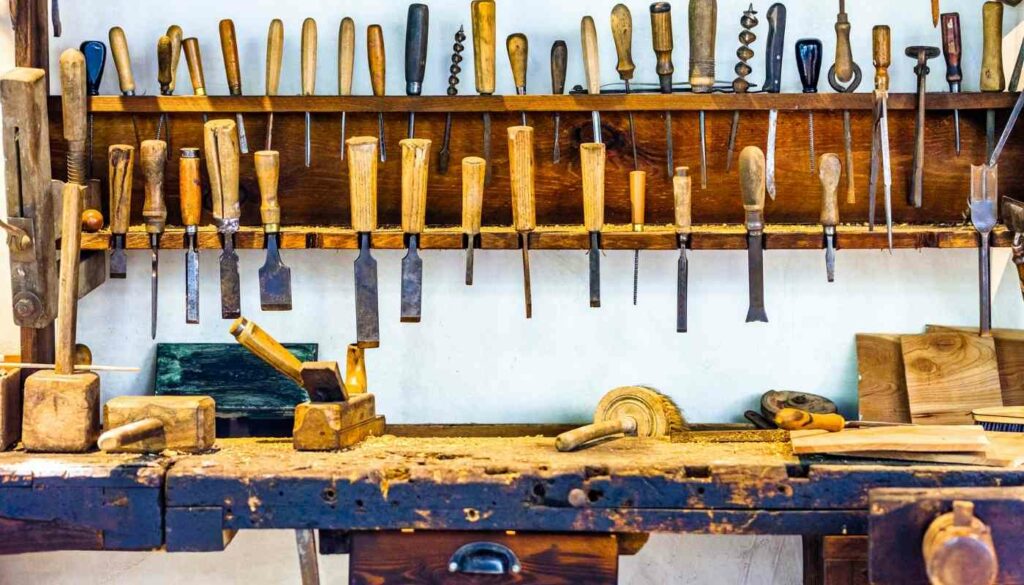
How Tall Are Older Workbenches?
Human beings have been woodworking for millennia, and workbenches have been around pretty much just as long—even primitive workbenches resemble modern ones in many ways. But one thing that distinguishes the workbenches of old from the new ones is the average workbench height.
That is, older workbenches are generally shorter—even shorter than what we consider “low workbenches” today—not only because human beings were shorter back then but also because they had requirements that modern woodworkers don’t have.
Since woodworkers were relying on a range of hand planes, they needed their workbenches to be lower so they could use these tools more easily.
When wooden hand planes were common, workbench surfaces began at knuckle-level. In other words, if you were to stand up straight with your arms at your side, the workbench’s surface would’ve been level with your middle knuckle.
When cast iron hand planes became the norm, workbench surfaces rose to wrist-level, mainly because cast iron hand planes require less strength to operate.
Final Thoughts on the Correct Workbench Height
As a woodworker, having a proper workbench is essential to your job.
Whether you’re bench grinders, table saws, or detailed work like wood carving – you need to have the correct workbench height to avoid back pain.
The average height workbench is around 34″ to 36″ tall. If you want a slightly taller workbench, you can add a couple of inches to it. If you want a lower workbench, take a few inches off.
The ideal workbench height will depend on how tall you are, your arm length, and the work that you’re doing.
If you’re a bit taller or have longer arms, go with a tall workbench height.
If you’re average height – go with a medium sized workbench.

